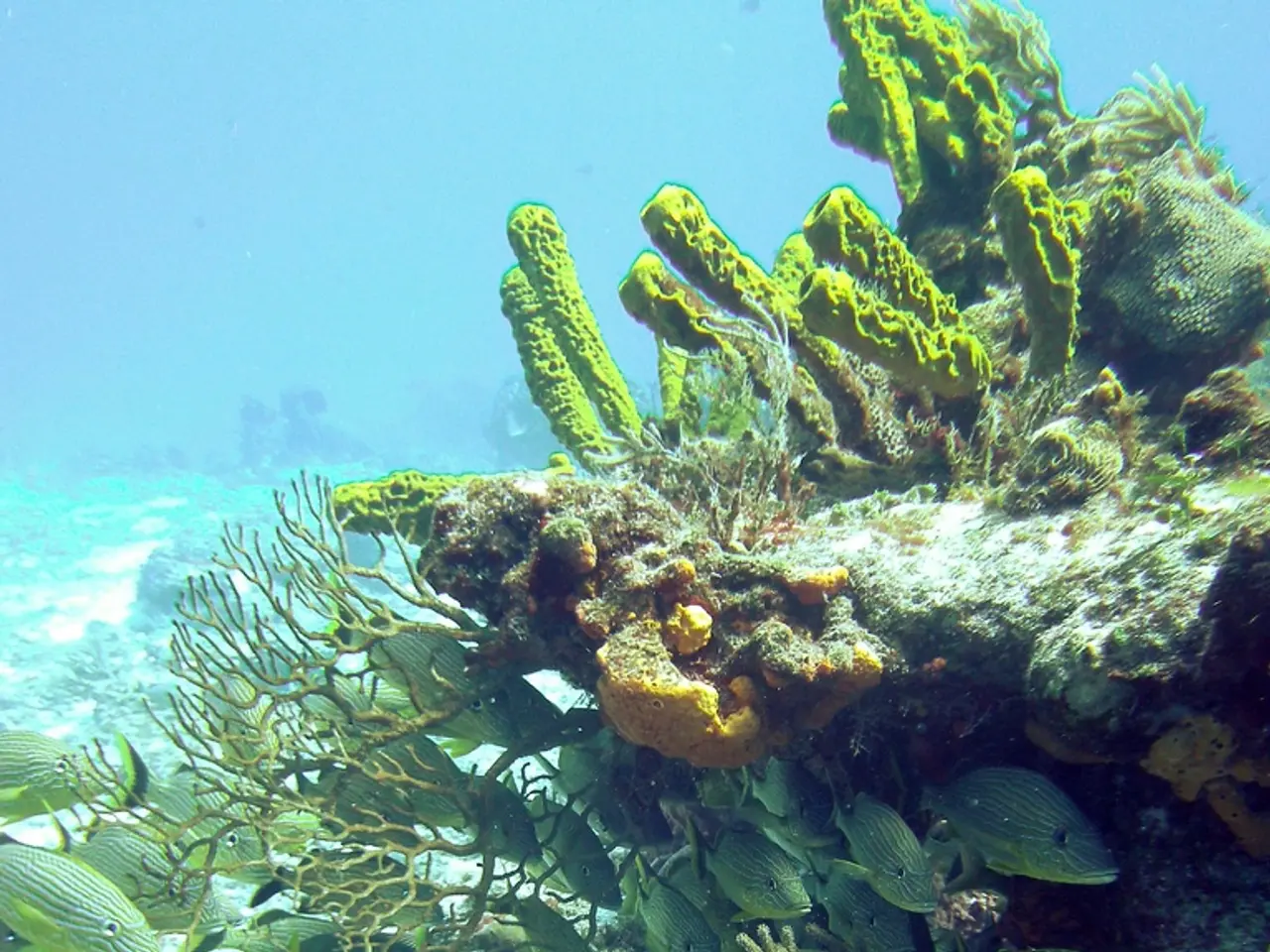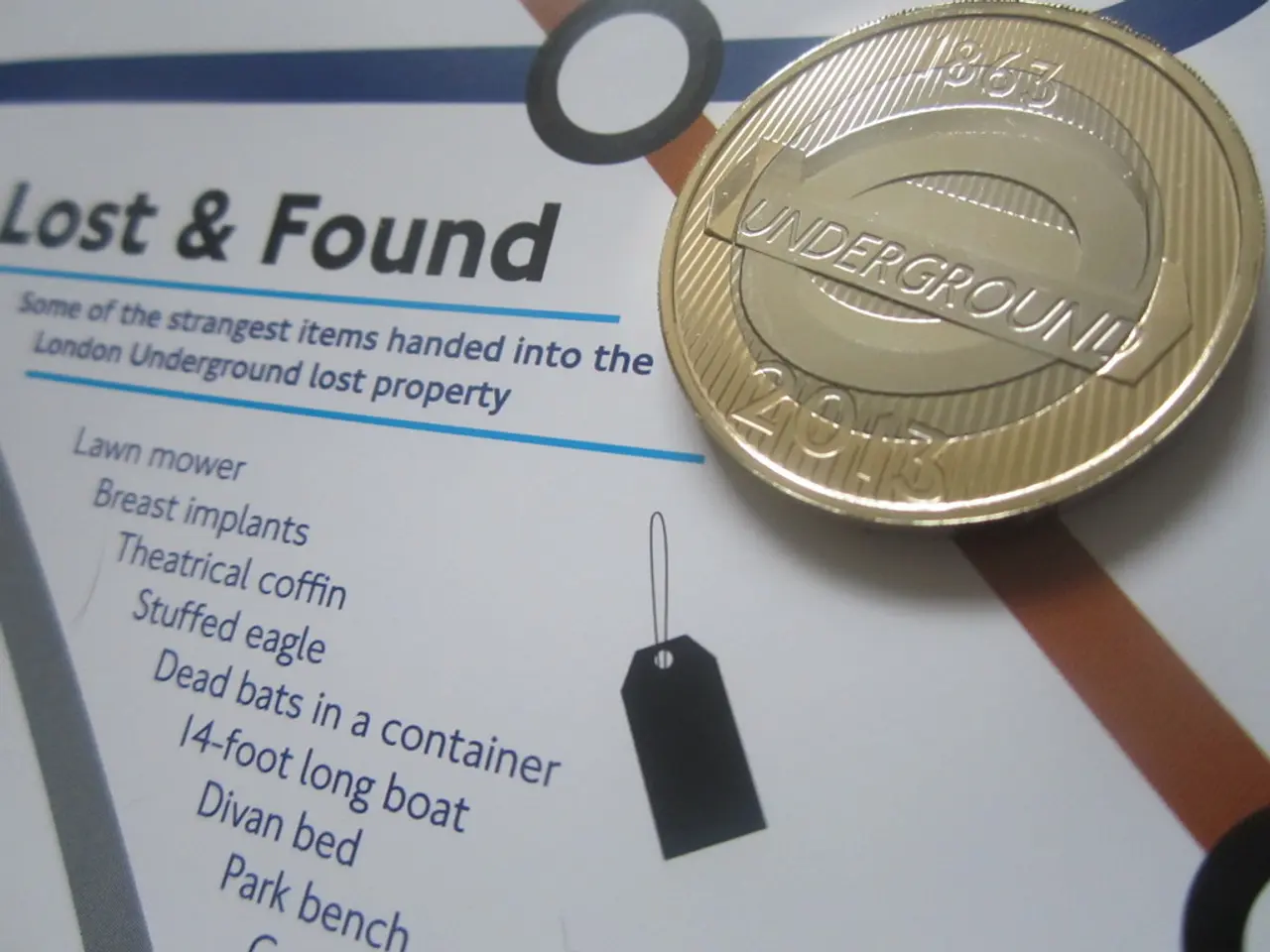Snoot Photography's Stealthy Effect on Depth of Field
In the world of underwater photography, one tool stands out for creating dramatic and artistic images: the snoot. This device, when used effectively, can transform ordinary shots into captivating works of art.
Recently, a bokeh test was conducted using a Sony A7S III, an anemone, a ReefNet fiber optic snoot, and a Sigma 105mm macro lens. The test images were taken at 1/160 sec @ ISO 200, with the f-stop clearly marked under each photo. The series included images taken at f/2.8, f/5, f/9, and f/20.
The snoot, while not physically altering the lens's aperture or focal properties, creates a visual shallow depth of field effect by focusing light tightly on the subject. This results in a clear subject separation and enhanced background blur (bokeh) look. The image taken at f/2.8 may have a shallower depth of field compared to those taken at higher f-stops, such as f/5 and f/9. On the other hand, the image taken at f/20 may have a very shallow depth of field compared to those taken at lower f-stops.
The snoot indirectly influences the perceived depth of field and bokeh by controlling where light falls. By directing light narrowly, the snoot creates a strong contrast between the sharply lit subject and the underexposed background, making the bokeh more pronounced. This is particularly beneficial in underwater photography, where achieving a true shallow depth of field can be challenging due to water's light-scattering properties.
Snoots in underwater photography serve to emphasise the subject and simulate a bokeh effect through controlled illumination rather than through lens optics alone. When shooting at a high shutter speed, a snoot allows for more bokeh (blurred area) in the images without compromising the dark background, a technique traditionally used in photography to create black backgrounds.
Experimenting with different f-stops while using a snoot can lead to unexpected and creative results. Using a snoot allows light to be placed only on the subject without light getting into the background of the image, making it a powerful artistic tool for creating dramatic bokeh and highlighting macro subjects.
In summary, a snoot in underwater photography enhances the subject's isolation and the perception of shallow depth by focusing light tightly but does not mechanically alter the lens’s depth of field. It's a tool that underwater photographers can use to create captivating and artistic images.
- In the test using a Sony A7S III, Sigma 105mm macro lens, and ReefNet fiber optic snoot, the snoot focused light tightly on the anemone, creating a clear separation between the subject and the underexposed background.
- The snoot, while not changing the lens's aperture or focal properties, indirectly influenced the perceived depth of field and bokeh by controlling where light fell.
- By directing light narrowly, the snoot helped create a strong contrast between the sharply lit subject and the background, making the bokeh more pronounced.
- In underwater photography, where achieving a true shallow depth of field can be challenging, snoots serve to emphasize the subject and simulate a bokeh effect through controlled illumination.
- When shooting with a high shutter speed and a snoot, photographers can create more bokeh in their images without compromising the dark background, a technique traditionally used to create black backgrounds.




